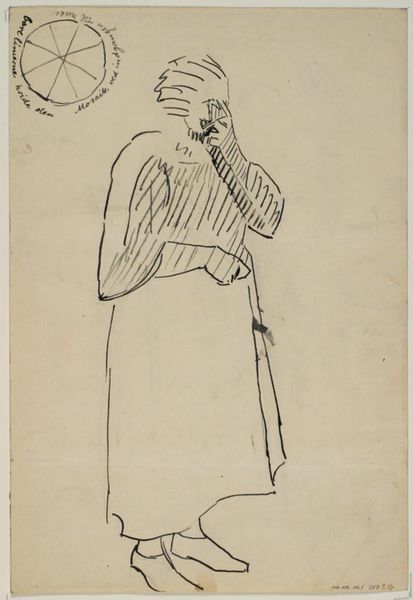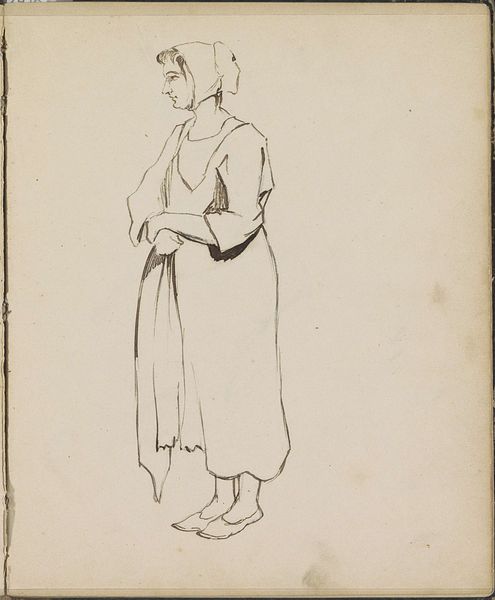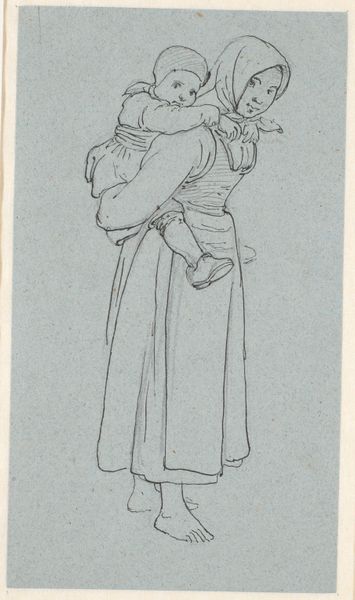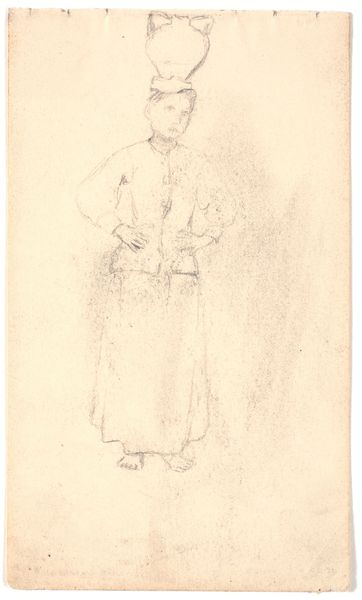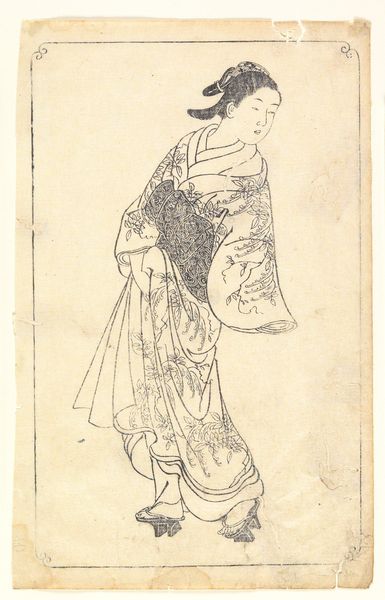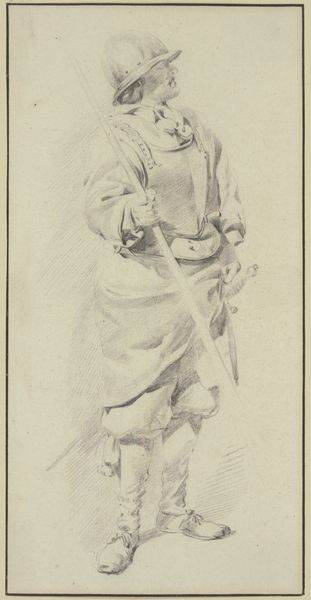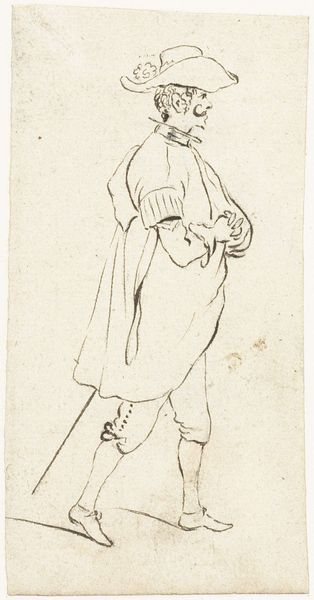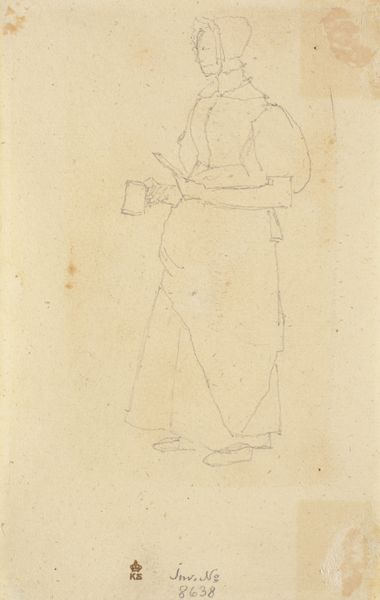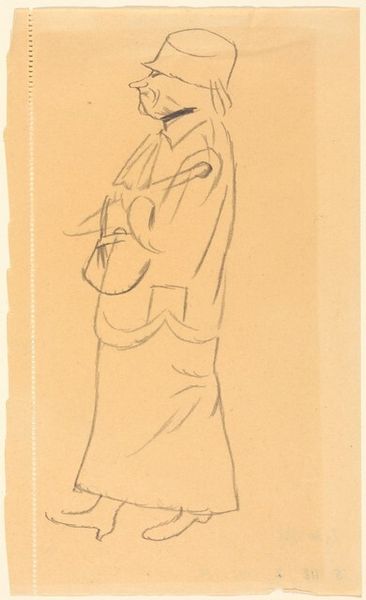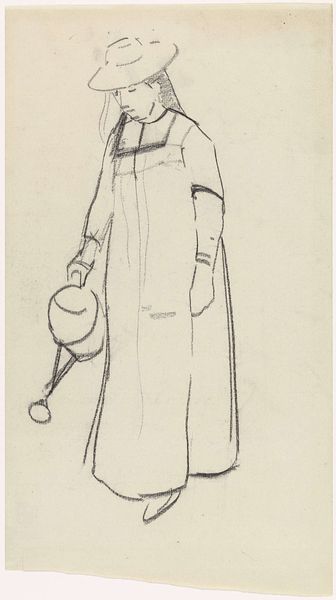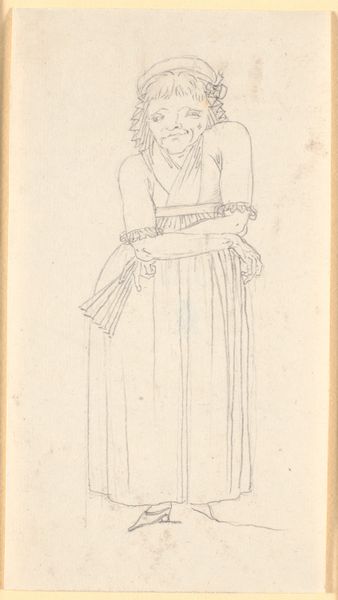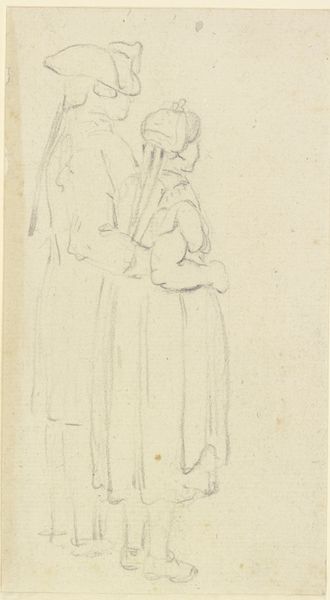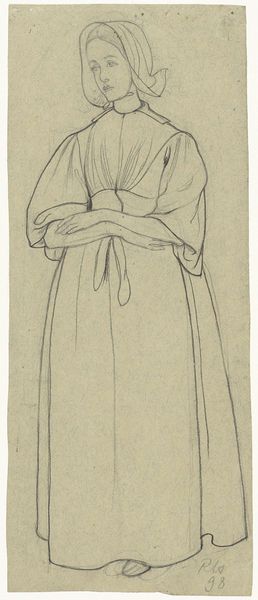
drawing, ink, pen
#
drawing
#
narrative-art
#
figuration
#
ink
#
pen-ink sketch
#
pen
Dimensions: 356 mm (height) x 242 mm (width) (bladmaal)
Curator: Looking at this pen and ink drawing titled "Kristus velsigner de små børn," or "Christ Blessing the Little Children" by Niels Larsen Stevns, created between 1902 and 1905, I am immediately struck by its somber quality. Editor: Yes, it's stark, almost brutally simple. The material handling is economical, but there is something unsettling about the linework and the way the figures occupy space. Curator: It presents an interesting interplay of religious iconography within the context of early 20th-century social consciousness. Stevns’s work frequently addresses themes of faith and humanity, and the rendering here prompts reflection on the role of maternal figures. How do they both embody and mediate divine grace? It reflects ongoing debates about the role of women within the church and larger societal power structures. Editor: It’s compelling how the materiality contributes to this feeling. The thinness of the ink, the rough strokes, give it an immediacy. One feels closer to the hand that created it, to the labour of its making. Did Stevns use specific types of pens or inks that might shed light on his process? Considering production and accessibility, perhaps he wanted to convey to people what blessing mean to them during the economic situation. Curator: Absolutely. Furthermore, this artwork exists in a space where we may scrutinize ideas regarding childhood innocence and societal expectations. Stevns offers an intergenerational portrayal through this very act of blessing where these are notions laden with socio-political implications that still resonate. Editor: Exactly, because when we consider his labor—his choices of inexpensive materials, for example—they reveal constraints under which Stevns was making his art and therefore impacting on both style and motif. What if it reflects his engagement and perception towards art history? Curator: Your point about Stevns' process makes me think about how Stevns navigates visual and societal tension through deceptively simple tools to make very bold decisions on portraying this scene and his perception of religious figures and their interaction with their flock. It's also very inspiring to reflect how simple materials could lead to powerful socio-political works and comments. Editor: For me, the beauty resides in how Stevns, with the bare minimum, highlights the artmaking, how a clear technique of work could turn an accessible artform for everyone, emphasizing production through its own simplicity.
Comments
No comments
Be the first to comment and join the conversation on the ultimate creative platform.
